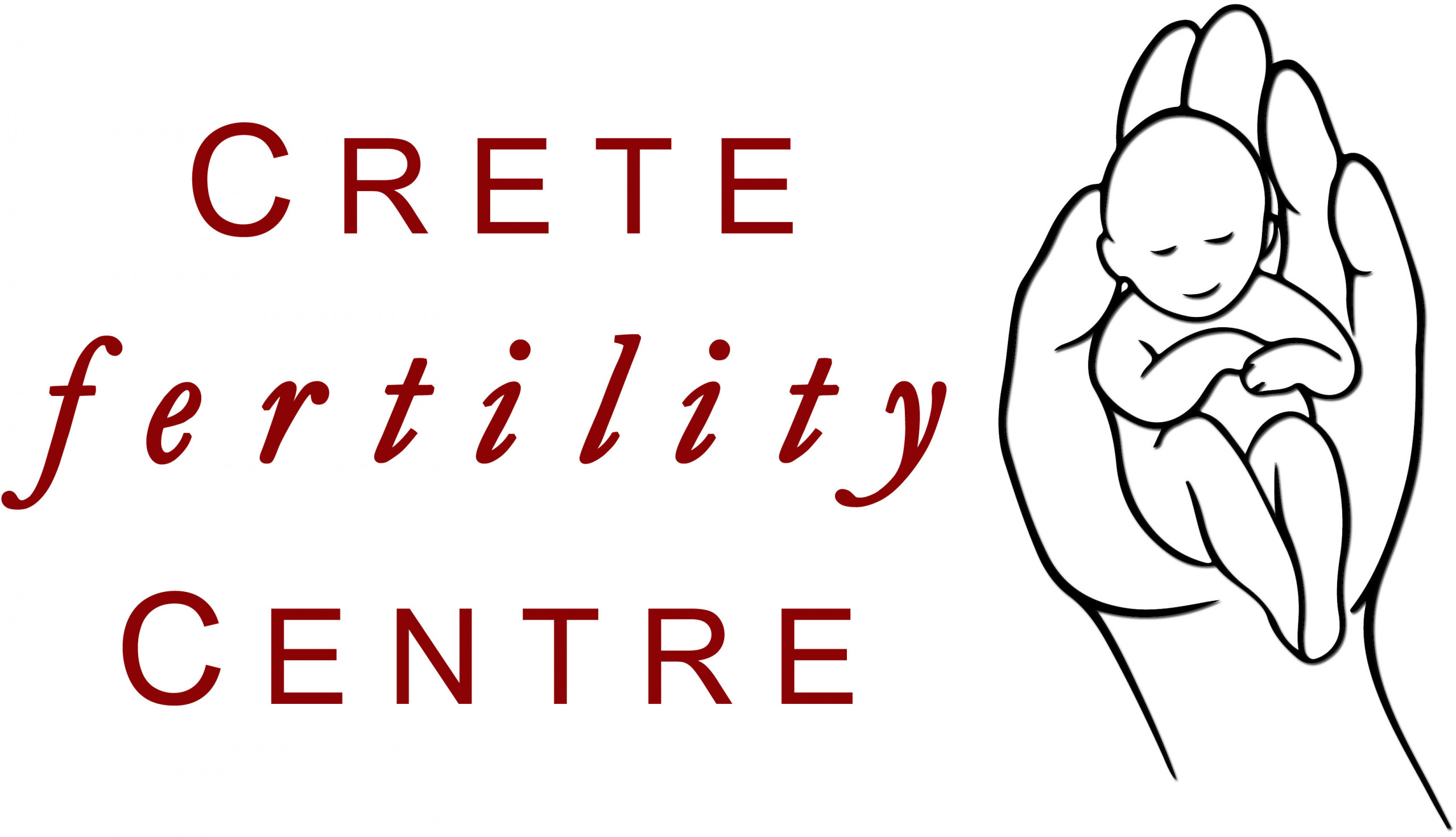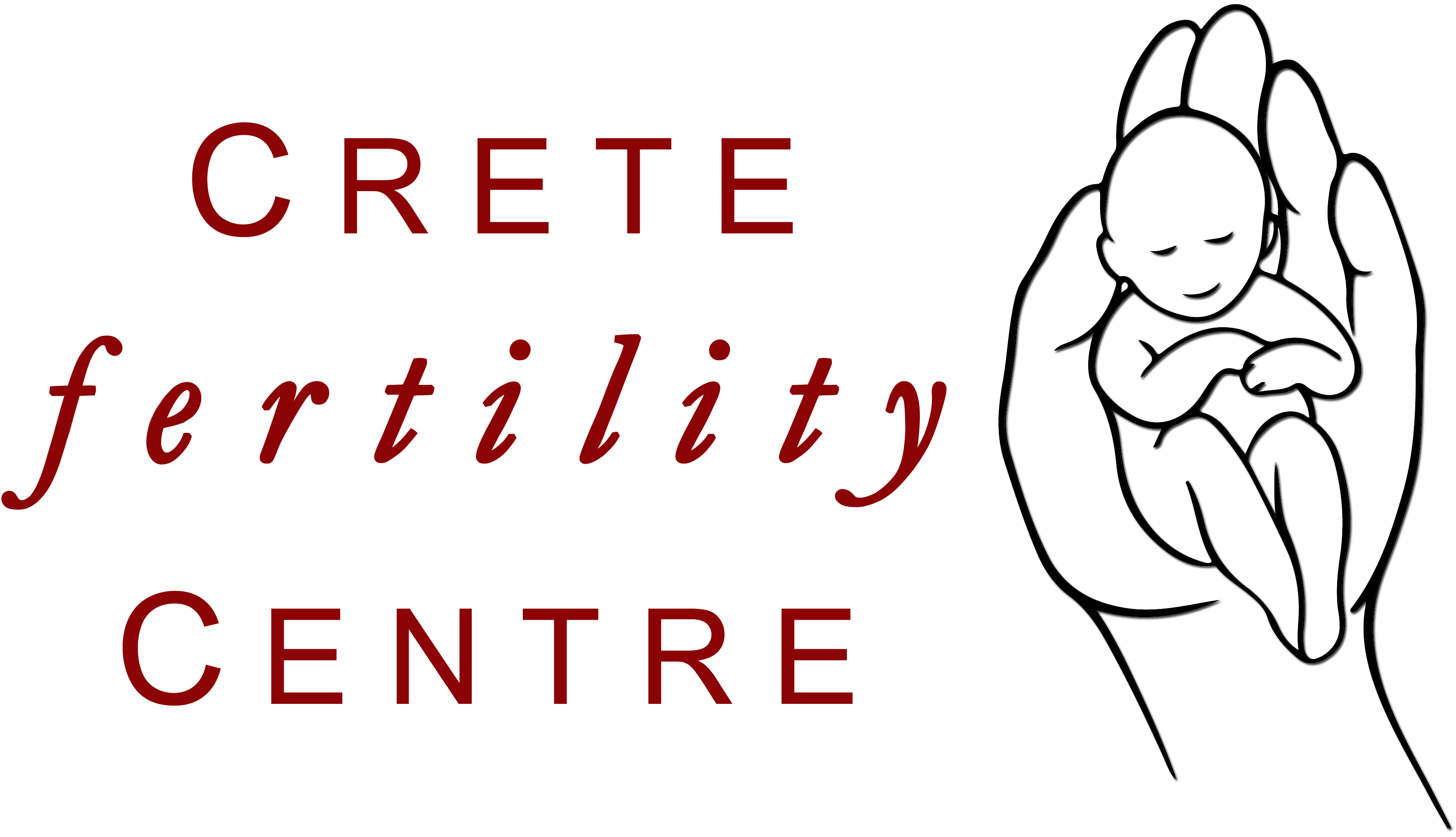TAKE BABY HOME Newest techniques increase pregnancy rates
Crete Fertility Centre is an active clinic in the field of assisted reproduction since 1992, receiving patients from all over the world. 31 years of experience in the field offering qualitative services. Thousands of patients have used the services of the centre, almost 6000 children born in any part of the world, from Australia to Norway, from Sweden to the United States, from Senegal to the Ivory Coast, from France to Italy.
Since its beginning, Crete Fertility Centre has worked with several British universities, such as the London one of St. Barth’s, with which it has established a relationship of continuous scientific exchanges, about new techniques but also on how to prepare patients to new tools that technology offers today. Without putting aside the training factor, which is very important, the staff is constantly updating its knowledge, using additionally the constantly open channel with English universities. Wanting to use a metaphor, we could say that only after a great workout, you can anchor in the ideas and insights to invent new techniques.
Starting from this technical but also human background, Crete Fertility Centre is able to offer new services. Because without a solid scientific base you do not have the tools to offer quality.
STEM CELLS THERAPY FOR VAGINAL TIGHTENING
The stem cells live inside all of us in various tissues; their task is to repair damage as it occurs. We all know that when we have a cut or injury our body repairs itself. As we age or experience severe injuries, we may not be able to recruit enough of these cells to fully repair this area.
The stem cells procedure contributes to the solution of this problem by extracting your own cells from an area of high volume, then concentrating the cells and re-injecting them into the damaged area to help the body recover naturally.
They are usually combined with non-invasive Plastic Surgery procedures to maximize the results. They hydrate/stretch the skin and remodel the collagen/fibronoblasts.
What does the treatment entail?
The cells that we are interested in collecting are called Mesenchymal cells since these cells have naturally regenerative properties. There’s a very high concentration of these cells in the fat tissue, the so-called adipose tissue. In a nutshell, what we do in the stem cells procedure is to remove a really small amount of your fatty tissue from your midsection. We then wash the tissue to get rid of any of the impurities and then re-inject the tissue back into the joint being treated.
What should I expect afterwards?
Stem cells adipose therapy is a one day procedure. Afterwards, you’ll be able to return home. Immediately after your treatment, you will be carefully monitored to make sure that you are feeling well and the incision areas have a quick and a good recovery. Most people don’t need to have stitches to close the incisions which should heal naturally. They can be covered with an absorbent dressing pad and compression wrap for 24-48 hours after the procedure. Before you leave, you will be given information about caring for your wound and a follow-up appointment date. You’ll also be provided with some advice on the post-operative medications.
Read more for Stem Cells therapy for vaginal tightening
Ovarian PRP Rejuvenation
Stem Cells can, under the proper biological stimulus, morph into any type of cell in the human body, including eggs. The presence of Stem Cells in the ovaries and their transformation into mature oocytes (egg cells) has been demonstrated in mice by Harvard researchers. Stem Cells have also been shown to be present in the human ovary, so it is quite possible that they can be transformed into eggs by Growth Factors contained in the individuals’ own white blood cells and platelets which have been injected into the ovary.
Injections of Growth Factors, when used for many other types of medical treatments, are made from a patient’s own blood and blood cells and is called PRP (Platelet Rich Plasma) or PDGF (Platelet Derived Growth Factors) Therapy.
How is the ovarian PRP rejuvenation procedure performed?
The process of ovarian PRP rejuvenation involves two steps. The first is the preparation of your PRP. This begins with at the insertion of a needle into your vein in order to obtain several tubes of your blood. Your white blood cells and platelets are separated from the red blood cells and serum by a procedure called centrifugation. The preparation of your PRP takes less than one hour. The next part of the ovarian PRP rejuvenation process is the injection of the PRP into the ovaries. The major difference in our study and the technique described in the referenced case study is that we use a non-surgical approach to the ovarian injections. The technique that we have developed to inject the cells into the ovaries is a nonsurgical, transvaginal ultrasound- guided injection performed under sedation with an anesthetic agent called Propofol. This is basically the same as the procedure that is used for an egg retrieval in the In Vitro Fertilization. In our experience, our approach is less invasive, safer, and has a shorter, more comfortable recovery. We have performed thousands of IVF egg retrieval procedures in the last 31 years, which, in our experience, has a well-established safety record, with an extremely low complication rate.
Results & Testimonials
This has encouraged us to prepare to offer PRP injections for other indications as vaginal atrophy, gynecological aesthetic treatment, to the vagina and labia as well as some types of urinary incontinence. It appears PRP regenerates healthy vaginal tissue. Reports from USA experts describe enhanced sensitivity of the genitalia leading to a more enjoyable and emotional sexual experience.
This additional treatment approach is already available in Crete Fertility Centre.”
Dr Matthaios Fraidakis
Read more for Ovarian PRP rejuvenation
Ovarian tissue freezing
Childbirth in women suffering from neoplasia
Ovarian freezing could provide an alternative, especially for women who cannot undergo egg freezing for medical reasons.
Unlike the freezing of eggs and embryos, where only one cycle can take several weeks to complete, the ovarian tissue can be frozen in a very short time. Even women who have to undergo chemotherapy or radiation almost immediately after diagnosis may be able to maintain their fertility using this method.
Ovarian tissue cryopreservation is a method of maintaining fertility in which the outer layer of an ovary, which contains a large number of young eggs, is removed and frozen for future use. In the process of freezing the ovarian tissue, a portion of an ovary is usually removed by laparoscopy. In the laboratory, the outer layer of the ovary (called the ovarian cortex) is cut into small strips and is frozen.
We are already currying out of this process with great success,enabling women who could never feel the happiness of motherhood to have their own child in their hands. We have been working successfully with Claus Yding Andersen for years at Aarhus University of Denmark, a pioneer of this method in the whole world.
Read more for Ovarian Tissue Freezing
Uterine PRP Rejuvenation
Adequate endometrial thickness is a main factor for implantation and pregnancy. In addition, thin endometrium is identified to adversely affect reproductive success rates after assisted reproductive technology (ART). Plenty of treatment modalities have been presented to improve endometrial thickness and the subsequent endometrial receptivity. Intrauterine infusion of platelet-rich plasma (PRP) is a novel approach that has been suggested for the treatment of thin endometrium. Various studies so far demonstrate the effectiveness of this technique.
PRP is autologous blood plasma that has been enriched with platelets at about 4-5 times more than the circulating blood. PRP can stimulate proliferation and regeneration with a large amount of growth factors and cytokines.
The results of several studies revealed the efficacy of PRP on endometrial growth and subsequently on the pregnancy rates, since pregnancy rate is increased with growing endometrial thickness. It helps in cases of recurrent abortions, cases which the endometrium lining does not became thicker using oestrogen, in cases of oocyte donation or after Asherman Syndrome. That’s why usually we do that together with the ovarian one.
PRP is a safe procedure, with minimal risks of transmission of infectious disease and immunological reactions since it is made from autologous blood samples.
Read more for Uterine PRP Rejuvenation
Vaginal PRP Rejuvenation
Nowadays, the loss of desire, sexual dysfunction and performance or urine incontinence affect millions of women on a daily basis. Independent of the woman’s age, these disorders affect their lives. Many factors are implicated in a woman’s sexual arousal disorder, with hormonal, physical, psychological and relational changes to be mainly accused. Decreased testosterone and estrogen levels, vaginal dryness, chronic health conditions and stress are the main contributors.
The vaginal PRP rejuvenation is part of an integrative approach designed to treat the above-mentioned disorders. It can, also, be combined with uterine and ovarian PRP rejuvenation treatment for a more holistic approach.
What is the vaginal PRP procedure?
The vaginal PRP comprises the injection of Platelet Rich Plasma (PRP) into the upper wall of the vagina and clitoris, triggering stem cells’ multiplication and “younger” tissue growth.
Growth Factors released from the activated PRP, promote collagen and elastin production inside the vagina and around the clitoris, causing its expansion due to tissue thickening, leading to easier stimulation, sexual enhancement and improved vaginal hydration.
To whom is the vaginal PRP addressed?
To any woman seeking sexual enhancement, especially if low desire, vaginal dryness or urine incontinence are present.
Read more for Vaginal PRP Rejuvenation
Recurrent Implantation Failure (RIF) – Biopsy/Scratch or Hysteroscopy
Some women undergoing IVF treatment fail to conceive despite several attempts with good-quality embryos and no identifiable reason. We call this ‘recurrent implantation failure’ (RIF) where the embryo fails to embed or implant within the lining of the womb. Studies have shown that inducing injury to the lining of the womb in the cycle before starting ovarian stimulation for IVF can help improve the chances of achieving pregnancy. Injury can be induced by either scratching the lining of the womb using a biopsy tube or by hysteroscopy.
Crete Fertility Centre incorporate this treatment for the “recurrent implantation failure” (RIF), where the embryo fails to embed or implant within the lining of the womb. Studies have shown that inducing injury (Biopsy/Scratch or Hysteroscopy) to the lining of the womb in the cycle before starting ovarian stimulation for IVF is 70% more likely to result in a clinical pregnancy as opposed to no treatment.
Bibliography:
- Potdar N, Gelbaya T, Nardo LG. Reproductive BioMedicine Online 2012; 25(6): 561-571.
Grant of Lipoproteins
An important new method is the use of Lipoprotein in couples who experience repeated failed attempts at implantation. After studies in women presenting infertility after use of intravenous solute Lipoprotein, suppression was observed in the activity of NK (Natural Killer) cells at physiological levels from the first week. These results demonstrate Lipoprotein can be successfully used as a therapeutic way to regulate the function of NK cells in women with reproductive failures.
Bibliography:
- Achdout, H., I. Manaster, et al. (2008). “Influenza virus infection augments NK cell inhibition through reorganization of major histocompatibility complex class I proteins.” J Virol82(16): 8030-8037.
- De Carolis, C., C. Perricone, et al. (2010). “NK cells, autoantibodies, and immunologic infertility: a complex interplay.” Clin Rev Allergy Immunol39(3): 166-175.
- Kling, C., A. Schmutzler, et al. (2008). “Two-year outcome after recurrent implantation failure: prognostic factors and additional interventions.” Arch Gynecol Obstet278(2): 135-142.
- Kwak-Kim, J., K. M. Yang, et al. (2009). “Recurrent pregnancy loss: a disease of inflammation and coagulation.” J Obstet Gynaecol Res35(4): 609-622.
- Roussev, R. G., S. C. Ng, et al. (2007). “Natural killer cell functional activity suppression by intravenous immunoglobulin, intralipid and soluble human leukocyte antigen-G.” Am J Reprod Immunol57(4): 262-269.
- Tan, B. K., P. Vandekerckhove, et al. (2005). “Investigation and current management of recurrent IVF treatment failure in the UK.” Bjog112(6): 773-780.
- Vosshenrich, C. A. J., M. E. Garcia-Ojeda, et al. (2006). “A thymic pathway of mouse natural killer cell development characterized by expression of GATA-3 and CD127.” Nat Immunol7(17013389): 1217-1224.
- http://www.ncbi.nlm.nih.gov/pubmed/22340745
Intrauterine injection of human chorionic gonadotropin (HCG)
Successful implantation after in vitro fertilization (IVF) and embryo transfer (ET) depends on several factors related to embryo quality and the receptivity of the endometrium. It is estimated that approximately 50% to 75% loss of pregnancy after in vitro fertilization – embryo transfer is due to implantation failure. Following clinical and laboratory studies it was observed that intrauterine infusion of human chorionic gonadotropin (HCG) before embryo transfer significantly improves the implantation success and significantly increases pregnancy rates after IVF.
Bibliography:
- Ragaa Mansour,Nevine Tawab, B.Sc., Omnia Kamal, B.Biomed., Yahia El-Faissal, M.D.,Ahmed Serour, M.D., Mohamed Aboulghar, M.D., Gamal Serour, M.D. Fertility and Sterility, Volume 96, Issue 6, December 2011, Pages 1370-1374.e11
Genetic detection by the PCR method of chlamydia and mycoplasma
Genetic detection by the PCR method of chlamydia and mycoplasma in period tissue (blood period), which possibly affects the implantation of the embryos.
Magnetic Cell Separation (MACS)
MACS is a technique that allows sperm with the best properties to be selected for use in assisted reproductive treatment.
In Vitro Maturation (IVM)
Conclusion
These innovative techniques are important in the prevention of miscarriages and to avoid repeated failed attempts of implantation. Also, for the successful and safe result the biggest role is played by the well-qualified and well-informed physician who will direct the couple to take the right decisions to successfully bring to life the next generation.




